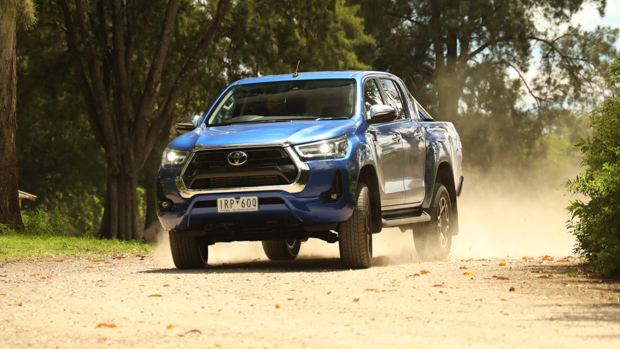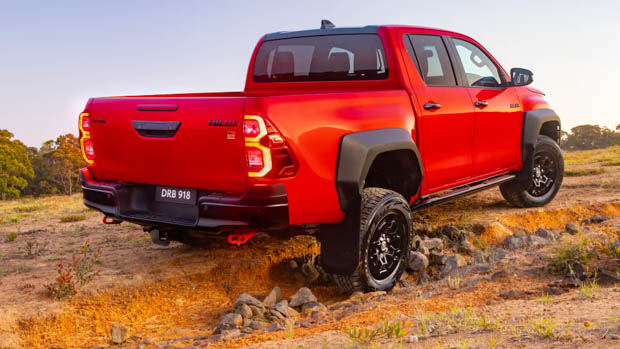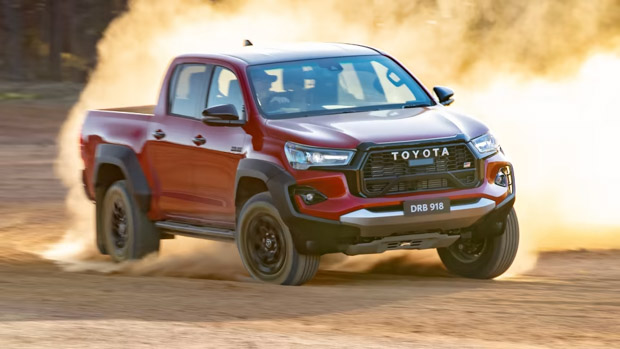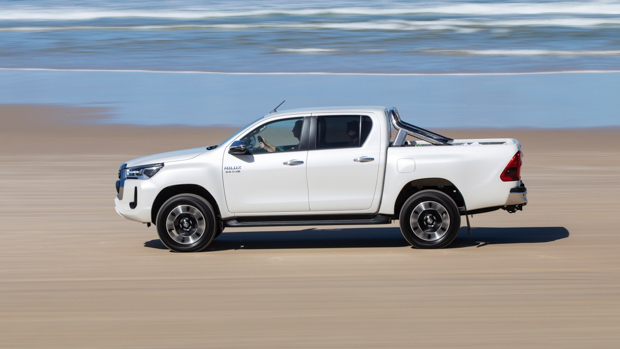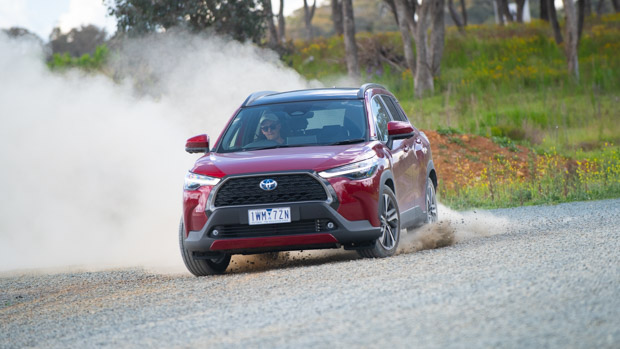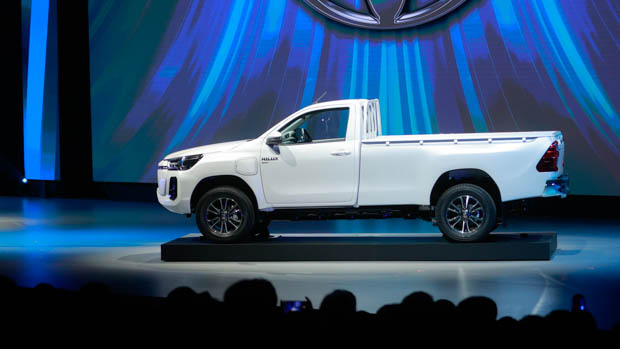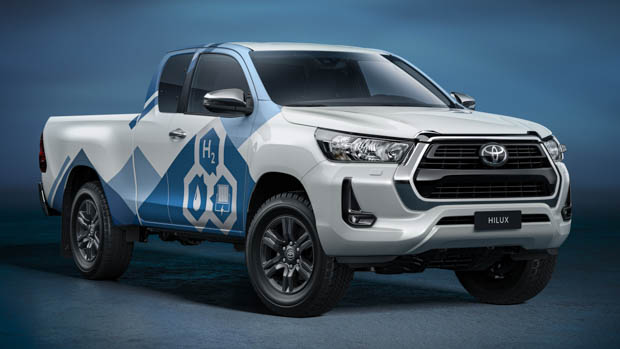-
Car Reviews
- All reviews
- Midsize SUVs
- Small cars
- Utes
- Small SUVs
- Large SUVs
- Large cars
- Sports SUVs
- Sports cars
- Vans
Latest reviews
- Car News
-
Car Comparisons
Latest comparisons
- Chasing Deals
Football, meat pies and Hilux utes. Aussies just can’t get enough of Toyota’s unbreakable workhorse and there’s plenty to get excited about in 2023
It seems like nothing can stop the unwavering dominance of the Toyota Hilux, including issues with crippling parts shortages, the arrival of fierce new rivals and not even the complexities of a pandemic.
That’s right, somehow the Hilux has won the gong as the best-selling vehicle in Australia for the seventh year in a row, but with the new T6.2 Ford Ranger now well-established and ramping up production, will this be its last year on top?
It’s a question that will be answered at the year’s end. Keep in mind, too, that the eighth-generation Hilux has been on sale for nine years now and a new-generation model isn’t expected to land until 2024 at the earliest.
That’s not to say that the Hilux is out of cards to play, with Toyota confirming a new GR Sport model to lure people away from tuned-up rivals such as the Premcar-fettled Nissan Navara Pro-4X Warrior and maybe even a flash new Ford Ranger Raptor.
Last year Toyota unveiled the redesigned Hilux Rogue, which surprised many by offering significant upgrades, including a wider track and disc brakes. Now, the engineers have taken it one step further with the GR Sport.
Unlike similar GR Sport variants of the Hilux unveiled for other markets, Toyota Australia has gone further than offering a mere sticker pack, with modifications to the suspension and even engine upgrades.
The mainstay 2.8-litre turbo-diesel four-cylinder now produces 165kW/550Nm – up 15kW/50Nm over the rest of the range – in GR Sport guise. The six-speed auto has received a more sporty tune and the driver scores paddle shifters to provide more precise control.
Other changes include unique monotube shock absorbers and a firmer suspension tune designed to dial out excess roll in the corners. The reworked setup is also said to tolerate more punishment when bush bashing.
We don’t know how much it will cost but we think somewhere around the $80K mark is a fair bet. It lands locally in the second half of 2023 and if you’re interested it would pay to put your name down sooner rather than later, as it’s likely to be quite popular.
Downtown Toyota, a major dealer in south-east Queensland, recently published data outlining the expected wait times on a range of models.
According to this, buyers can expect to wait around five months or more for its 4×2 models and eight months or more on 4×4 models, which if true would be a major drop from the previous six-to-12 and 12-to-18-month wait times reported for these models in 2022.
Wait times are an issue that is hardly exclusive to Toyota, but it’s one we’re also certainly getting tired of and thankfully the Japanese carmaker is looking to ease this problem in the coming year.
In a global statement released by the conglomerate, Toyota Motor Corporation (TMC) said a key goal for its year ahead would be to “deliver as many vehicles as possible to our customers at the earliest date”.
TMC said it would seek to build 10.6 million cars in 2023, significantly up from the 9.2 million it estimated would roll off the production line by the year’s end, back in December 2022.
Toyota Australia has spent much of 2022 rolling out its connected services on popular models such as the Corolla, Corolla Cross, RAV4 and Kluger so it’s more than likely that the Hilux will be next.
Last year, Toyota ripped the covers off the refreshed Rogue grade and among the list of new features was the brand’s connected services technology that we expect to roll out across the lineup in the coming months.
The technology introduces functionality such as connection to a smartphone using the myToyota Connect app allowing the driver to view data such as the GPS location (handy when/if it gets stolen), check if your windows are down or doors are locked and how much fuel you’ve got left in the tank.
A notification will also be sent to your phone automatically in the event of a collision and will automatically alert emergency services. Driver’s can also trigger this response via an SOS button inside the car.
Australia’s first electric ute landed in 2022 in the form of the LDV eT60 and it’s clear by the confidence of its $92,990 price tag that car manufacturers are seeing a growing demand for similar zero-tailpipe emissions drivetrains in the light commercial segment.
The nature of commercial vehicles, and the way they are used, presents a real challenge to get this new technology to work effectively and without compromise to general usability. However, multiple vehicle manufacturers, including Toyota, are bullish about making the EV application work.
Towards the tail end of the year we saw Toyota unveil an electric prototype of the Hilux but what caught our attention was the earlier announcement of a hydrogen-electric version being built in the UK.
Although it’s currently just a small-volume project, Toyota Australia told Chasing Cars that it would be watching the project with “great interest”, and it makes sense given that it has invested huge amounts of money into popularising hydrogen in Australia.
Furthermore, hydrogen vehicles are much quicker to refuel and often travel further than a comparable electric vehicle – with Toyota’s Mirai concept previously travelling over 1360km on one tank.
It’s unlikely that we’ll see any hydrogen or fully-electric arrive in Australia in the coming year but expect more news along these lines.
Latest news
About Chasing cars
Chasing Cars reviews are 100% independent.
Because we are powered by Budget Direct Insurance, we don’t receive advertising or sales revenue from car manufacturers.
We’re truly independent – giving you Australia’s best car reviews.
